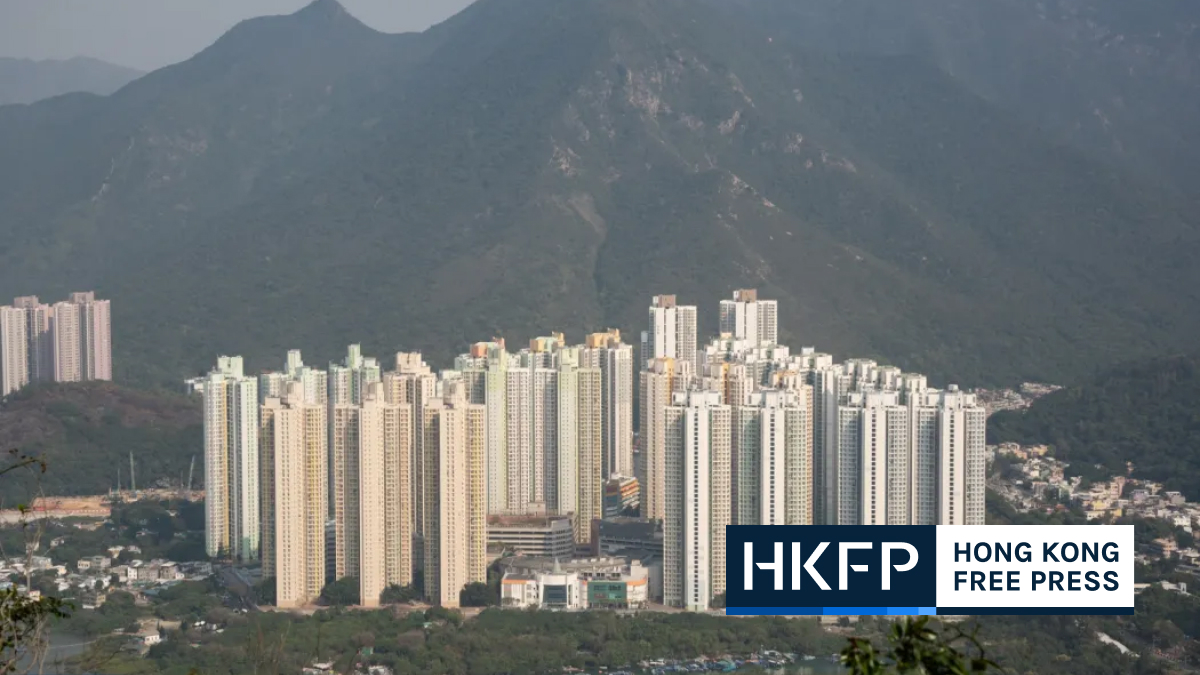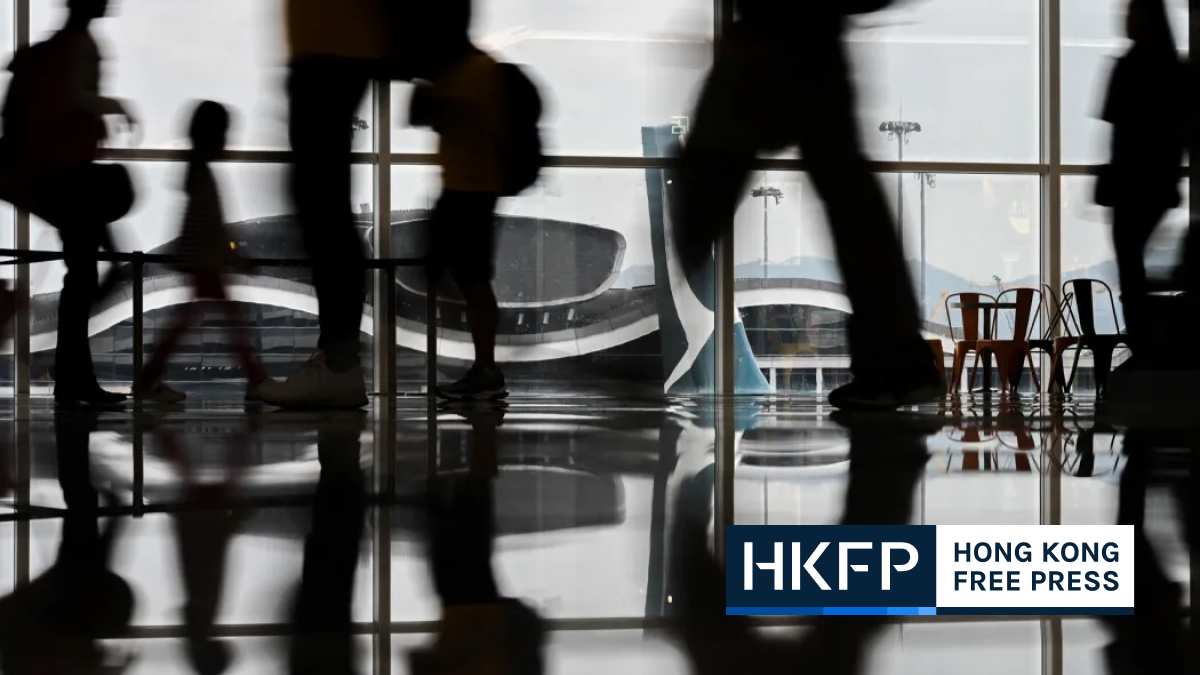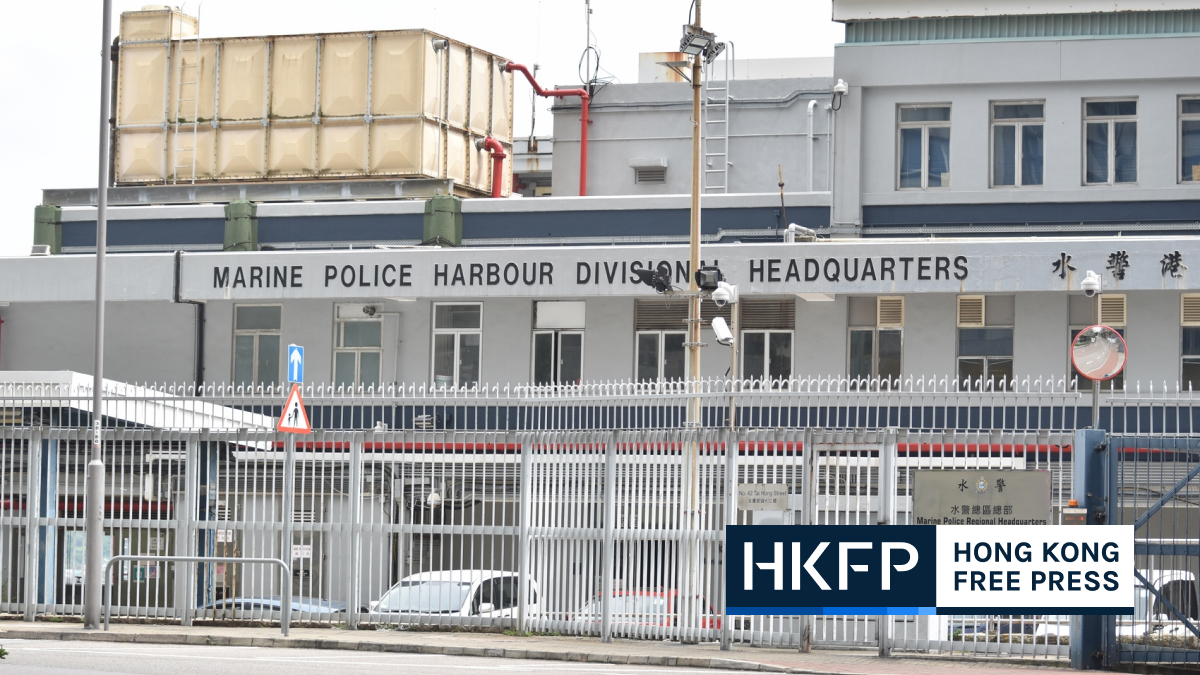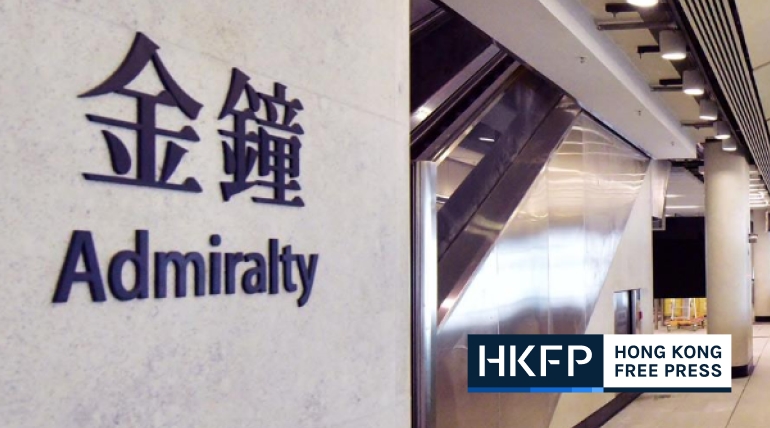With an investment of over HK$1.6 million, Adrian Lai and his partner Tiffany Ha ventured into Hong Kong’s century-old flower market last November.
“We were optimistic about its business prospects – all shops here are street-front shops, and the pedestrian traffic is bustling,” Lai told HKFP in Cantonese.
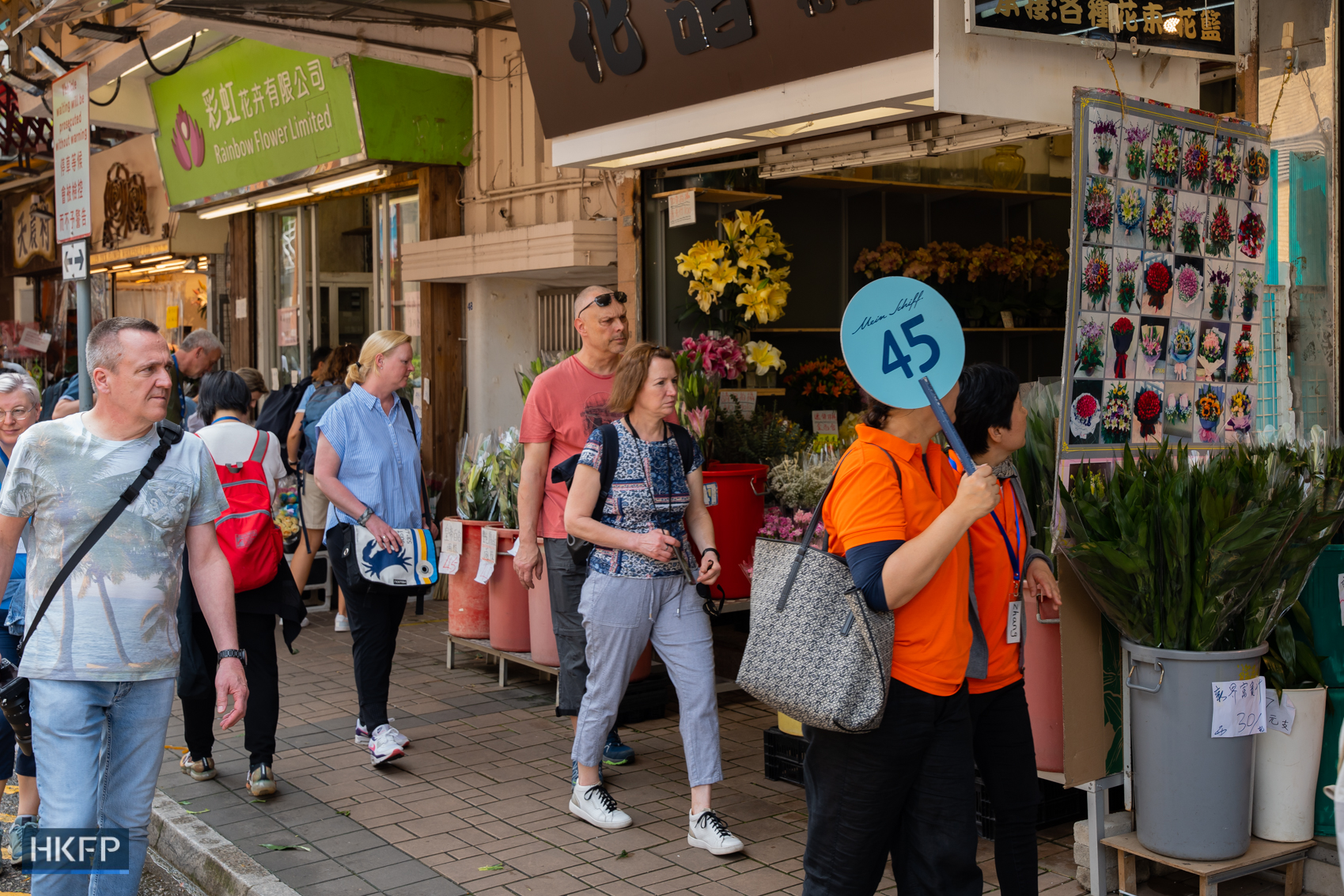
While Lai has been an entrepreneur for years, Ha is good with cut flowers. The young couple in their 30s opened a shop at the junction of Sai Yee Street and Prince Edward Road West, which showcased blooms and greenery from all over the world: mainland China, the Netherlands, South Africa, Ecuador, and New Zealand.
Thanks to the city’s free market and free port, the flower market flourished over the decades as the economy grew. With 122 ground-floor shops currently spanning four streets, it is often listed as one of the world’s most famous flower markets.
So Lai was shocked when, just four months after they opened their business, a huge redevelopment scheme for the flower market district was announced by the Urban Renewal Authority (URA) in mid-March. It proposes the demolition of 22 low-rise buildings which accommodate 35 ground-level shops and 12 upper-level shops, and the acquisition of much public land to build high-rise residential buildings, commercial blocks and a waterway park.
Under the scheme, Lai’s shop will be one of those acquired by the URA. Two 38-storey residential blocks will go up after the demolition of old buildings and dozens of flower stores along Sai Yee Street. The podium of these two apartments will be a five-storey shopping mall.

The URA says it aims to enhance the market’s vibrancy and solve traffic problems by including car parks in new buildings. However, according to florists interviewed, there has been no guarantee that the 28 affected florists will be allocated new stores when development is completed.
While not having to relocate, a further 94 shops will have to contend with drastic changes to their commercial environment. Compensation for those that would be affected by the proposed development is still being negotiated.
See also: Flower market residents fear plans to build high-rises and mall will uproot community
The scheme also faces criticism from residents, pro-establishment lawmakers and a civil group, questioning the use of public land to develop commercial properties.
“We can foresee, with such a big shopping mall erected here, people coming from Prince Edward MTR station will be attracted to and trapped in the mall. Is it a good thing for the flower market?” Lai said. “And it will take 10 years to finish the project. With large construction sites in operation, how will we be able to operate as usual?”

In a social impact report, the URA said it had conducted a survey of the market in January, interviewing 63 florists and 728 consumers. Citing the florists, it said it had identified three problems: a lack of space to display products, a lack of car parks, and shortage of space to load and unload goods.
But Lai and Ha questioned the survey’s validity. Ha said researchers had walked into their shop and announced they were conducting a survey commissioned by the government.
“The researcher said ‘a waterway will be built there’, ‘it’s a good thing,’ and started to fill in the questions without asking me, ” Ha told HKFP in Cantonese, adding that she refused to share her personal information to the researcher when requested.
Lai said the questions were worded to invite certain answers. “The design of the questionnaire was quite suggestive, asking questions such as whether one agrees if the flower market should provide more car parks,” Lai said, “Of course everyone agrees. Hong Kong is always short of car parks – you see it in Causeway, Central, Tsim Sha Tsui.”
“But it is a trap, as it did not mention how they planned to do the redevelopment, that they would acquire shops to build car parks and shopping malls.”

Another two florists, Tommy Cheng and Lai Wing-chun, told HKFP they had not filled in any surveys before the redevelopment scheme was announced.
In response to questions from HKFP, the URA said the research was conducted by a research company the authority had commissioned. It refused to disclose the questionnaire.
“In order to minimise the duration occupied and the possible interruption by conducting interviews, the company advised that the respondent was assisted by their interviewer in filling out the digital questionnaire during which the respondent was present throughout the process,” URA said in a written response, adding that the interviewers adhered to a code of conduct and maintained professionalism in data collection.
A business of three generations
Cheng, a businessman in his 40s, said he grew up in the market, where his family had run a florist business for three generations. While his shop in Flower Market Road is not one of those due to be acquired, he is still worried about the impact the redevelopment would have.
“At this moment [I] do not feel supported [by the scheme]. I just feel helpless. While our shop is not to be demolished, we care about the whole industry,” Cheng said in Cantonese.

Cheng’s grandfather, a farmer from the New Territories, began coming to the market to sell flowers in the 1970s. The market at that time was a traditional one without fixed stores, with local farmers arriving in the early morning and leaving in the evening.
According to Roots, Leaves and Flowers: Memory and Imagination of the Flower Market, a book published in 2022, the flower market had its roots in the late 19th century when more and more flower-loving Britons came to live in the city.
It took off after the Kowloon-Canton Railway was launched in 1910 and Mong Kok East station was built near the market, helping New Territories farmers to travel to Kowloon. In 1948, the then-colonial government named a new street Flower Market Road.
But it was not until the 1980s, following China’s opening-up and exports of cut flowers at competitive prices, that some florist wholesalers started to set up stores.

Cheng said his father took over the business in the 1980s and made the bold decision to rent a shop.
“Rent per month was around HK$1,500 at that time. My grandfather didn’t want to. He was afraid we couldn’t survive with such a high rent.” But Cheng’s father took the risk. Apart from a farm in Hong Kong, the family started to run farms in Guangdong province, expanding their business into a wholesale model.
The business prospered in the 1980s and 1990s, but hit a snag in 2003 when the SARS epidemic broke out. “My father had to sell some assets to save the shop.” In 2004, Cheng himself decided to help in the family business and take over the shop.
For decades, the market grew without any government support. While the URA proposes developing special spots for flower viewing in a waterway park, Cheng said the market itself had always been a place where people could appreciate blooms.

“Over the past 20 years, the characteristics of the market were gradually formulated. Not only locals but many foreigners came to enjoy the flowers. And many operators gave flowers to tourists for free. We felt so happy that people appreciated our flowers.”
Cheng said florists had been trying to gain more government support over the past few years, advocating for a government-run flower market with affordable rent. But there was no hope.
Now, he is trying to understand the rationale for the redevelopment.
“We will lose dozens of shops and their customers, and construction will take years… I am afraid our characteristics will be neglected in the scheme and our vibrancy will be destroyed before it is completed.”
Between the gov’t and business community
Lai Wing-chun, the chair of the market’s commerce chamber, also questioned some aspects of the redevelopment.
Although it still needs approval from the Town Planning Board, Lai Wing-chun felt it would be difficult to change the scheme. A pro-Beijing figure, he is a member of the powerful committee tasked with electing the city’s leader and of the Yau Tsim Mong area committees.
“I felt the [authorities] had made decisions … It’s a pity. How to run this flower market in the coming 10 years?” Lai Wing-chun said in Cantonese. “The scheme proposes building a waterway park for fun and photo-taking. That’s not helping the flower market.”

The Guangzhou-born businessman was a doctor in mainland China and ventured into the flower market in 1993 after emigrating to Hong Kong.
He remembers that there were only around 30 florists at the time, with most located on Flower Market Road and the intersecting Yuen Ngai Street.
Business expanded quickly, since whenever Hongkongers started new businesses, bought new homes or hosted events, they marked the occasion with bouquets. After launching his first shop in Flower Market Road, the entrepreneur quickly opened another in Sai Yee Street in 1998.
“I was the first to open a flower shop in Sai Yee Street, where sports shops, fashion boutiques and canteens used to dominate. I hired someone, with a salary of HK$5,000 per month, to lead customers from Flower Market Road to Sai Yee Street.”

Some 20 years later, Sai Yee Street has become a major component of the market. Under the URA’s scheme, dozens of florist shops will be acquired and demolished, including Lai Wing-chun’s.
Since 2000, Lai Wing-chun has been chair of the Hong Kong Wholesale Florist Association, representing the florists in the market.
“This community grew by itself and I served as a bridge between the government and the commerce community, such as asking for more space to display our flowers, ” he said. But as far as the redevelopment project was concerned, the chamber was not trying to negotiate with authorities and not organising members to discuss or convey their concerns.

“No one wants to organise… There would be a lot of responsibility. And the URA will negotiate with each property owner separately, offering a quotation. Take it if you are fine with the price.”
The businessman said he supported the redevelopment scheme in general, but hoped the authorities would do their best to provide compensation. And he was concerned about the future of the market.
“It will become a high-end district like Central. But will it help flower sellers?”
Speaking up
Adrian Lai, however, is trying to make his voice heard. He adores the flower market district and wonders if it is really necessary to demolish the Prince Edward Building – a 60-year-old structure that accommodates his shop.
“This building is well maintained and was renovated just a few years ago,” Adrian Lai said. “It’s refreshing walking in the district – it had become very developed dozens of years ago… where you could enjoy seeing architecture from different historical periods. ”

Deliveries did not block local traffic, he said. “The practice is to deliver flowers around 5am to 8am, and shop operators don’t need to wait for them… deliverymen just drop everything in front of our shop.”
Adrian Lai attended a URA briefing for affected florists on March 25. Following a 40-minute introduction, there was a 10-minute question and answer session. “I raised my hand for nearly 10 minutes but I was not picked.”
Cheng said he and many other florists had reached out to lawmakers and district councillors to express their concerns. Afterwards, the URA hosted another meeting with the local business community on April 25. More than 20 florists, including Cheng, Adrian Lai, and Lai Wing-chun, attended.
On May 7, these business owners, along with some residents, met representatives of URA and of Home Affairs Department. But Cheng said he did not have any hope of improving the scheme at the moment.
In his opinion, the simplest way to support the market would be to provide affordable shop rents.

“I hope the URA can consider implementing the project in different phases, for example building the proposed multi-purpose government complex first, then allocating affected flower sellers space in the ground-floor shops of this complex [before building other blocks]…” he said.
According to the scheme, on-street retail units at the complex would have a florist or horticultural theme. “The URA will consider giving priority to the florist operators affected by the redevelopment to move back to these retail units after completion of the scheme,” it said in a written response to HKFP.
“Consider giving priority” was too vague for people running a business, Adrian Lai said.
“They can offer you a super high rent and ask if you accept it, otherwise the shop will be leased to others,” Lai said. “We’re worried about where to go… Setting up a business here, we were not only thinking about a year or two. We really hoped to run a long-lasting business.”
Support HKFP | Policies & Ethics | Error/typo? | Contact Us | Newsletter | Transparency & Annual Report | Apps
Help safeguard press freedom & keep HKFP free for all readers by supporting our team

LATEST FROM HKFP
HKFP has an impartial stance, transparent funding, and balanced coverage guided by an Ethics Code and Corrections Policy.
Support press freedom & help us surpass 1,000 monthly Patrons: 100% independent, governed by an ethics code & not-for-profit.
